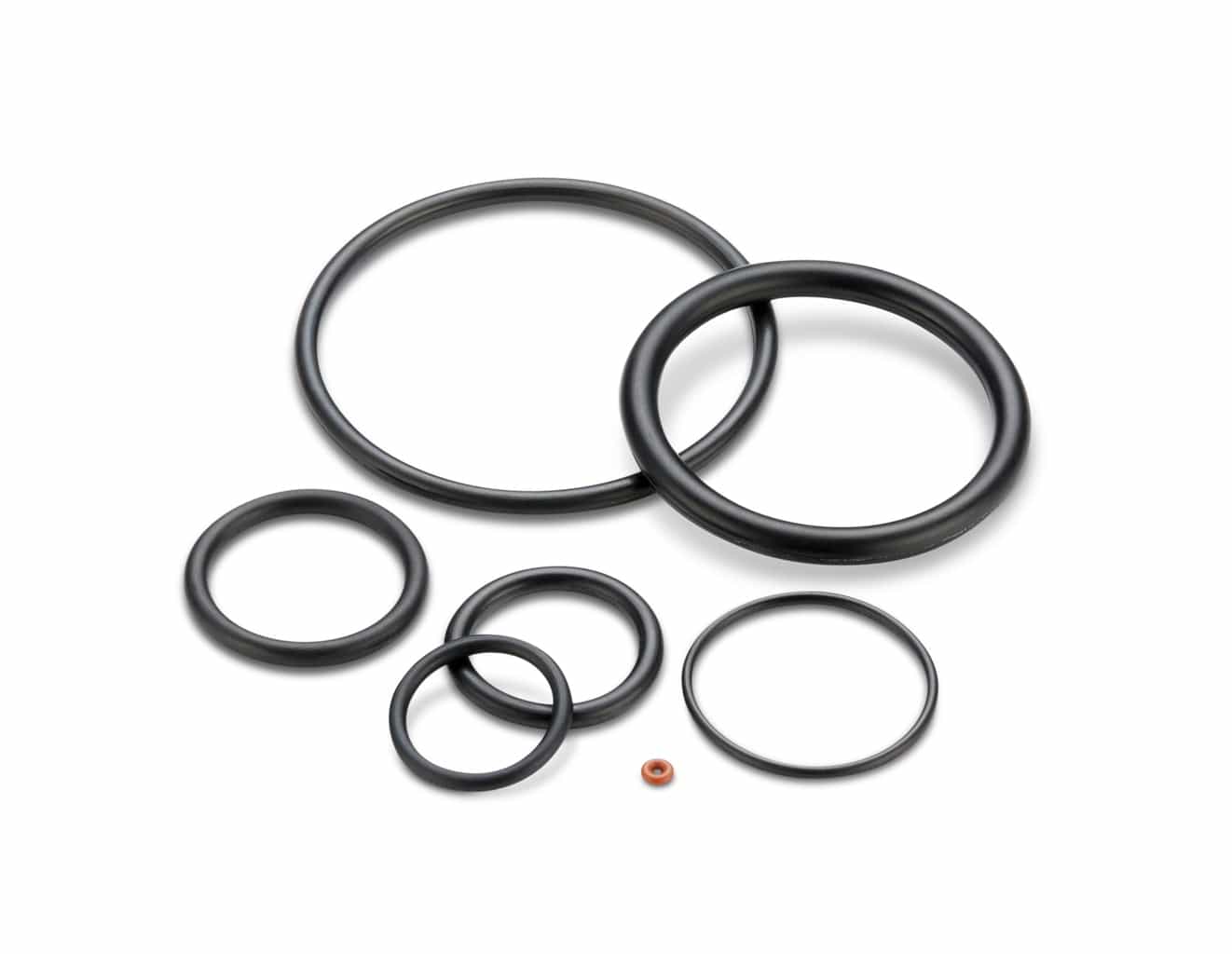
Quad-Ring® Brand and O-Ring Seals for Face Seal Applications
Quad-Rings® Brand and O-Rings seals are routinely used for face seal applications, which can be either static or dynamic applications.
General Considerations
The seal should be selected and the groove should be designed so the seal is always positioned against the side of the groove opposite the pressure. This prevents the applied pressure (or vacuum) from moving the seal which can lead to seal failure. When selecting the seal and designing the groove, use the groove and seal size tolerance conditions which will result in the seal always being positioned against the side of the groove opposite the applied pressure.
When designing face seal grooves, be careful to distinguish between the axial groove depth, which is the depth of the slot machined into the components for the seal, and the axial gland depth, which is the total axial space allowed for the seal (see the example here). If necessary, refer to the glossary for a more detailed description of the two terms.
The groove diameters for a face seal are usually established based upon one of the following:
- A predetermined groove ID or OD has been selected based upon other design criteria (size of the unit, minimum amount of wall thickness necessary, etc). The groove width “D”, taken from the O-Ring or Quad Ring® Brand seal table, for the selected seal cross-section size is then used to calculate the groove diameters by either adding or subtracting twice its value from the predetermined groove dimension. The seal size is then selected to position it properly as described above.
- A particular seal has been pre-selected or is already available.
Internal Pressure: The minimum seal OD is calculated and then the groove OD is established so the seal is always seated against it. The groove ID is calculated by subtracting twice the appropriate groove width.
External Pressure: The maximum seal ID is calculated and then the groove ID is established so the seal is always seated against it. The groove OD is calculated by adding twice the appropriate groove width.
The recommended gland depths for Quad-Ring® Brand seal and O-Ring face seal applications are the same as for radial applications. Recommended gland depths can be found in the Quad-Ring® Brand seal tables and for an O-Ring. However, the orientation of a face seal groove is axial instead of radial.
In an application where there is direct contact between the mating surfaces, such as with a cover, the groove depth is simply the recommended gland depth. In an application where there is clearance between the mating surfaces, the groove depth is calculated by subtracting the appropriate static or dynamic recommended gland depth from the absolute position of the sealing surface.
Groove Design for Face Seal Applications
- Cross-section. Select a seal cross-section size from the available standard sizes. If you are unsure what cross-section size to use, see the discussion here.
- Clearance. Determine the maximum clearance present in your application. In a direct contact application, consider the potential for variations in the surface flatness.
- Check the Clearance. Determine if the clearance is acceptable for the application pressures and the material hardness being used by checking this graph. Minnesota Rubber and Plastics standard-line products are made from materials having a hardness of 70 Shore A. If the clearance is unacceptable, component tolerance will have to be tightened or a harder seal material will have to be special ordered. For a face seal, use the clearance determined in Step 2 and read its value directly from the graph.
- Calculate the seal groove dimensions. Using either the Quad-Ring® Brand table or the O-Ring table, determine the groove width “D” for the seal cross-section size you have selected. Determine the seal groove diameter as described in the paragraph above.
- Groove Depth. Using either the Quad-Ring® Brand seal table or the O-Ring table, select the recommended gland depth for a static or dynamic application.
- Percent Gland Fill. Determine the maximum percent gland fill. If the gland fill exceeds 100%, the groove will have to be redesigned. A good “rule-of-thumb” is to not exceed about 90% gland fill.
- Calculate the Seal Squeeze. Calculate the minimum and maximum seal cross-sectional compression (squeeze). The recommended gland values in the seal tables have been developed to create a proper range of squeeze for many applications. In applications involving high pressure, large component tolerances, or other extreme conditions, the seal and groove design should be verified through an acceptable method, such as testing or engineering analysis.
Maximum Percent Compression = (1 – (Min Gland Depth/Max Seal Cross-Section)) x 100
Minimum Percent Compression = (1 – (Max Gland Depth/Min Seal Cross-Section)) x 100 - Select the Seal. Select the Quad-Ring® Brand seal with an inside diameter which will position the Quad-Ring® Brand seal on the side of the groove opposite the pressure.
- Detail the Groove. Complete the groove design by specifying the proper radii and finish as indicated in the appropriate figures located here or here.